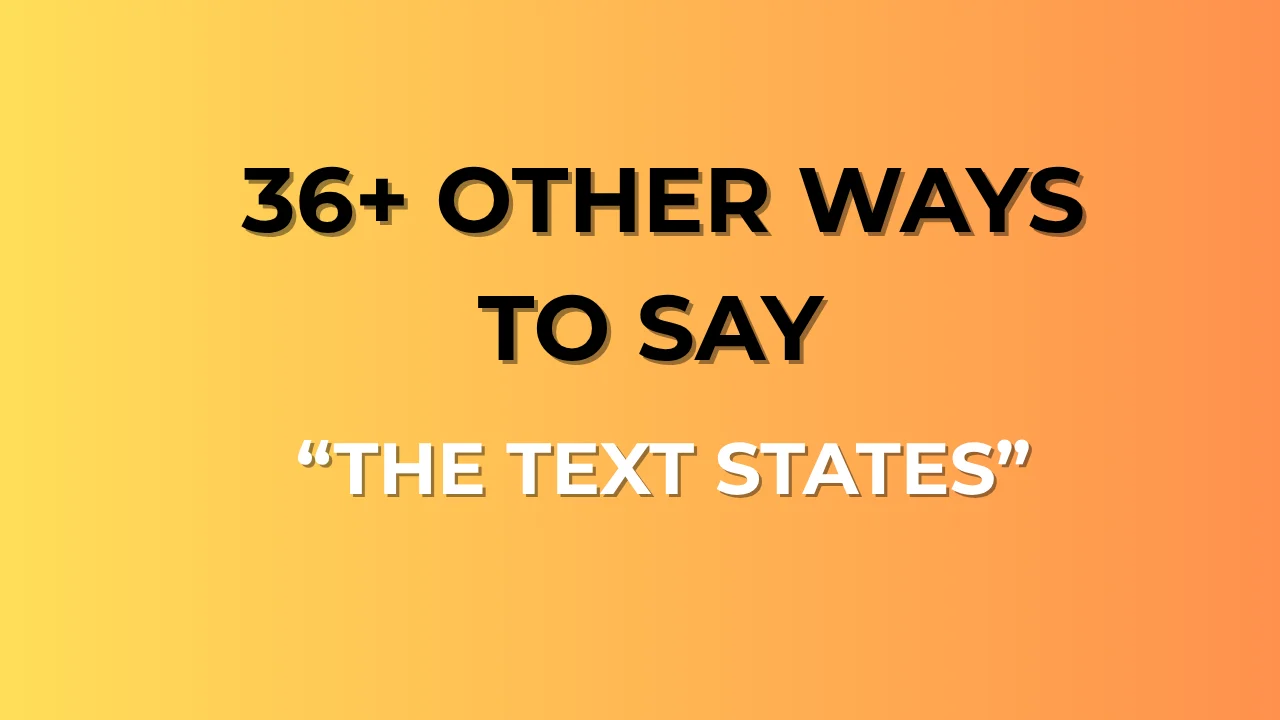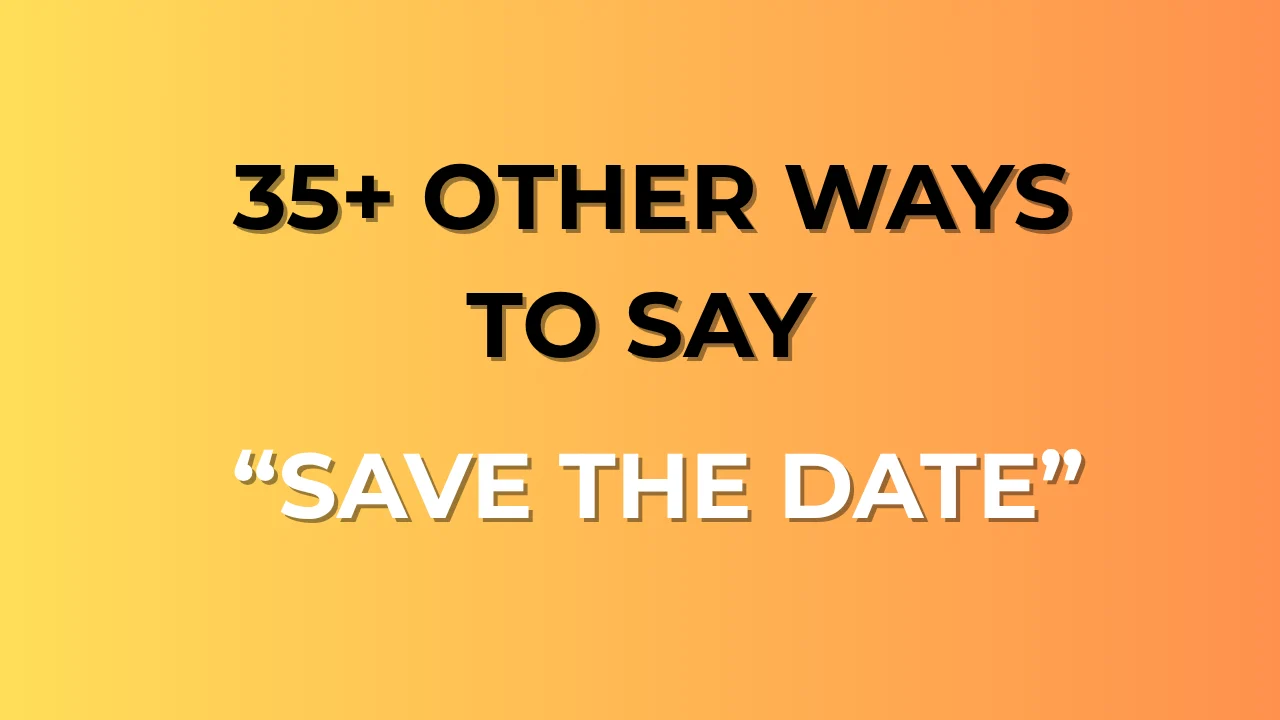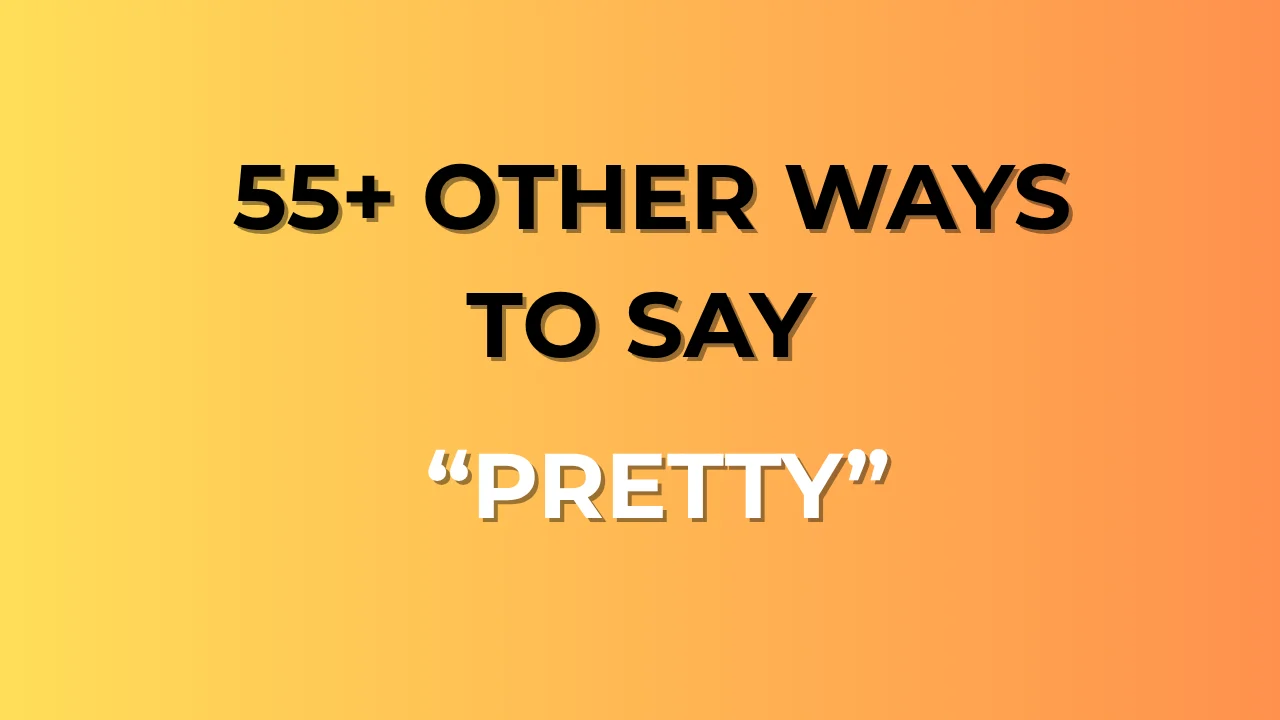If you’re writing essays, research papers, or academic analyses, chances are you’ve used “the text states” hundreds of times. While it’s grammatically correct, repeating it can make your writing sound robotic or monotonous.
To make your writing more polished, engaging, and professional, you can use a range of alternatives that express the same meaning — but with more variety and sophistication.
Here are 36+ other ways to say “the text states”, with real dialogues between Ramzan (A) and Aiman (B) showing how to use them naturally in context.
1. The passage explains
A: How do we show what the author means here?
B: The passage explains how resilience shapes the character’s journey.
💡 Tip: Ideal for academic essays and literary analysis.
2. The author notes
A: Should I quote this line directly?
B: Yes, the author notes that identity is a recurring theme.
💡 Tip: Professional and concise — perfect for research papers.
3. The article mentions
A: I’m referring to that line about teamwork.
B: The article mentions that collaboration drives innovation.
💡 Tip: Works great for reports or academic references.
4. The excerpt suggests
A: What’s the implied meaning here?
B: The excerpt suggests a deeper emotional struggle.
💡 Tip: Subtle and interpretive — perfect for analytical writing.
5. The writer argues
A: How can I describe the author’s point of view?
B: The writer argues that education should be more inclusive.
💡 Tip: Ideal for essays and research discussions.
6. The paragraph indicates
A: How do we link this to the theme?
B: The paragraph indicates the shift in the narrator’s tone.
💡 Tip: Great for pinpointing evidence in longer texts.
7. The source highlights
A: Should I add supporting evidence here?
B: Definitely — the source highlights this idea clearly.
💡 Tip: Excellent for formal academic and reference writing.
8. The evidence shows
A: How do I prove this claim?
B: The evidence shows that climate change impacts rural economies first.
💡 Tip: Strong and assertive; good for argument-based writing.
9. The document reveals
A: What does the data show?
B: The document reveals a steady increase over the decade.
💡 Tip: Works perfectly in analytical or historical writing.
10. The study finds
A: How can I make this sound more scientific?
B: The study finds that social media influences behavior patterns.
💡 Tip: Essential phrase for academic research reports.
11. The report outlines
A: How do I introduce the data summary?
B: The report outlines the main strategies for improvement.
💡 Tip: Common in business and policy writing.
12. The narrative describes
A: How can I show what happens in that chapter?
B: The narrative describes the protagonist’s transformation vividly.
💡 Tip: Literary and formal — great for book or story analysis.
13. The passage reveals
A: What’s the hidden message in that paragraph?
B: The passage reveals the author’s personal conflict.
💡 Tip: Adds a thoughtful, interpretive tone.
14. The chapter discusses
A: Which section covers leadership skills?
B: The chapter discusses different approaches to leadership.
💡 Tip: Perfect for structured academic or textbook references.
15. The text implies
A: Should I write “states” or “implies”?
B: Use “implies” — the text implies a deeper moral issue.
💡 Tip: Excellent for indirect or inferred meanings.
16. The author emphasizes
A: How can I show importance here?
B: The author emphasizes the need for empathy in society.
💡 Tip: Strong and academic — works for essays and articles alike.
17. The novel portrays
A: What’s another way to say “shows”?
B: The novel portrays the effects of loneliness beautifully.
💡 Tip: Artistic and expressive; great for literature reviews.
18. The paper argues
A: Is “states” too weak here?
B: Yes — say “the paper argues that…” instead.
💡 Tip: More authoritative and analytical.
19. The article explores
A: How can I sound more scholarly?
B: The article explores how culture influences communication.
💡 Tip: Great for summarizing in academic tone.
20. The author asserts
A: I want something more confident than “says.”
B: Try “the author asserts” — it sounds strong and formal.
💡 Tip: Perfect for critical essays or arguments.
21. The passage illustrates
A: How do I show this idea clearly?
B: The passage illustrates the character’s emotional growth.
💡 Tip: Visual and interpretive — works well in literature essays.
22. The section examines
A: This part analyzes the problem, right?
B: Exactly — the section examines the root causes in depth.
💡 Tip: Academic and organized; great for reports or research.
23. The writer conveys
A: What word fits when talking about feelings?
B: The writer conveys a sense of hope and renewal.
💡 Tip: Gentle and expressive; ideal for literary tone.
24. The essay demonstrates
A: How can I summarize this author’s point?
B: The essay demonstrates how personal growth emerges from adversity.
💡 Tip: Formal and scholarly; good for conclusion statements.
25. The poem expresses
A: Should I say “states” in poetry analysis?
B: Not really — say “the poem expresses a longing for peace.”
💡 Tip: Softer and more emotional for artistic works.
26. The article provides evidence
A: I need to support my claim.
B: The article provides evidence that supports your argument.
💡 Tip: Perfect when citing facts or studies.
27. The text conveys
A: I don’t want to keep saying “says.”
B: Then use “the text conveys” — it’s smoother and formal.
💡 Tip: Simple and flexible for both essays and discussions.
28. The passage underscores
A: How do I show importance again?
B: The passage underscores the value of unity and compassion.
💡 Tip: Professional tone with emphasis.
29. The author clarifies
A: How can I highlight explanation here?
B: The author clarifies the concept of modern democracy.
💡 Tip: Academic, clear, and precise.
30. The article discusses
A: What’s another neutral way to begin?
B: The article discusses current trends in digital marketing.
💡 Tip: Common, professional, and direct.
31. The source demonstrates
A: How do I sound more analytical?
B: The source demonstrates how effective leadership builds trust.
💡 Tip: Ideal for essays and technical reports.
32. The document outlines
A: Should I say “the text states” here?
B: Better to say “the document outlines the core objectives.”
💡 Tip: Works for policy papers and formal references.
33. The study reveals
A: Is “states” too weak for data?
B: Yes — say “the study reveals a clear correlation.”
💡 Tip: Great for data-based or factual discussions.
34. The text highlights
A: I want something more dynamic.
B: Go with “the text highlights the theme of transformation.”
💡 Tip: Versatile and modern — fits any tone.
35. The research indicates
A: What’s a formal alternative for scientific writing?
B: The research indicates a strong connection between habits and outcomes.
💡 Tip: Academic and professional tone.
36. The author points out
A: How can I phrase this clearly?
B: The author points out that balance is key to progress.
💡 Tip: Direct, clear, and conversational — fits all styles.
Final Thoughts
Using “the text states” repeatedly can make your writing feel mechanical.
Try these 36+ academic and natural alternatives — each one adds depth, flow, and professionalism to your essays, reports, or analyses.
Whether you’re writing “The author emphasizes,” “The article explores,” or “The study reveals,” — variety and precision are what truly make your writing shine.



